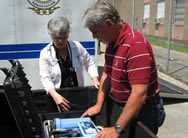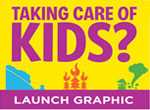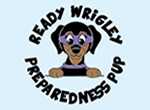Pediatrician for Preparedness: Dr. Landers’ Story
There are many ways for pediatricians to help ensure the needs of children are met in a disaster. Each pediatrician should participate in emergency planning efforts.

On April 27, 2011, Alabama experienced a series of more than 60 tornadoes, three of which were category EF-5. By the end of the day, hundreds of lives, including lives of children, were lost. “Nothing strengthens one’s resolve as a pediatrician to do more for children than to look into the faces of grieving parents” said Dr. Karen Landers.
As Assistant State Health Officer and a Pediatrics Consultant for the Alabama Department of Health, Dr. Landers was in a unique position to help families through the tornado recovery and ensure the needs of children were included in planning for disasters.
“I still become emotional remembering the devastation I observed in the light of the next day with children and parents sorting through piles of rubble that had once been their home,” said Dr. Landers. With homes destroyed, immediate needs included locating safe places for infants and children to stay as well as finding safe food, water, and medicines. However, addressing mental health soon emerged as a major need.
Lessons Learned
As the result of her experience in the tornadoes, Dr. Landers encourages pediatricians to join emergency planning efforts in their communities and states to ensure the needs of children are a routine part of the planning process. “My ongoing passion is ensuring that we remember the uniqueness of children in disasters, and I continue to ask for guidance from my pediatric colleagues,” said Dr. Landers. “Part of our state response in follow up to the April 27, 2011 tornadoes was to form Health Care Coalitions in each of our public health areas to solicit input from physicians of all disciplines, hospitals, and other members of the health care community.”
There are many other ways for pediatricians to be help children in disasters. “Each pediatrician should find his/her niche to contribute in emergency preparedness whether it be patient education, hospital preparedness, community models, drill participation, or state level plans” said Dr. Landers. ‘My words for my fellow pediatricians are “prepare and train with your community to protect the children.’”
For more information on emergencies planning for health professionals visit, https://www.cdc.gov/childrenindisasters/professionals.html.
More Resources
The contents of this story were provided courtesy of the American Academy of Pediatrics and Dr. Karen Landers. Karen M. Landers, M.D., F.A.A.P. is the Disaster Preparedness Chapter Contact for the Alabama Chapter of the American Academy of Pediatrics. She is Assistant State Health Officer and Pediatrics Consultant for the Alabama Department of Public Health. Dr. Landers was recently appointed Director of the Tuberculosis Control and Immunization Programs for the Bureau of Communicable Disease within the Alabama Department of Public Health.
- Page last reviewed: July 26, 2017
- Page last updated: June 23, 2015
- Content source:


 ShareCompartir
ShareCompartir



